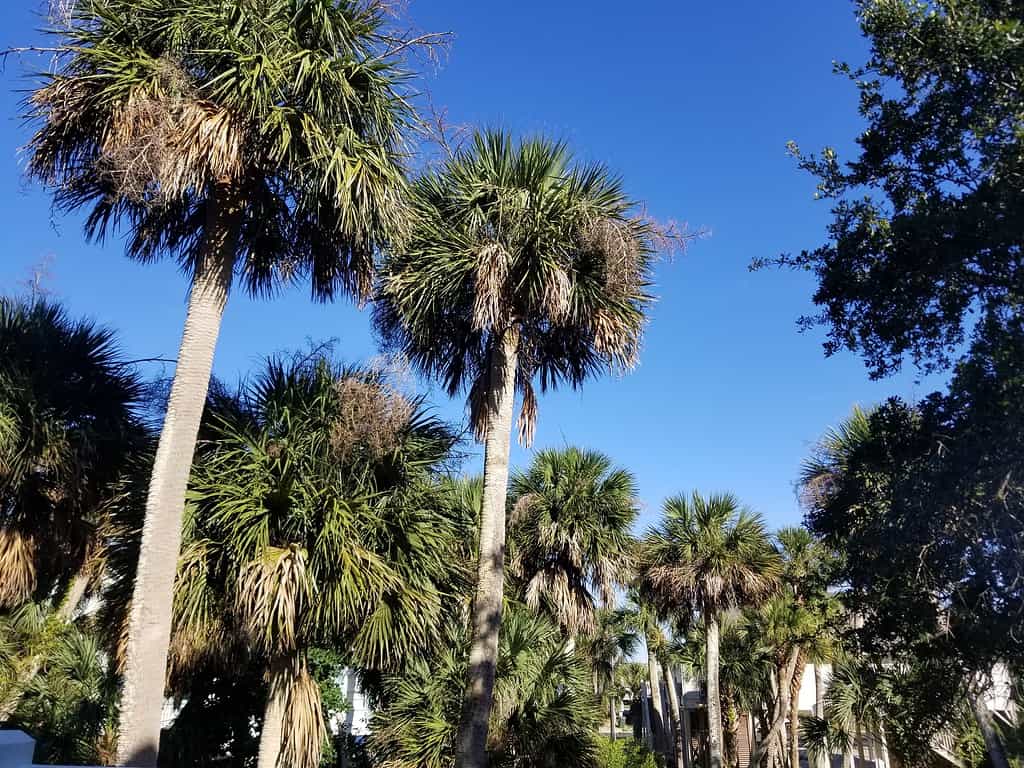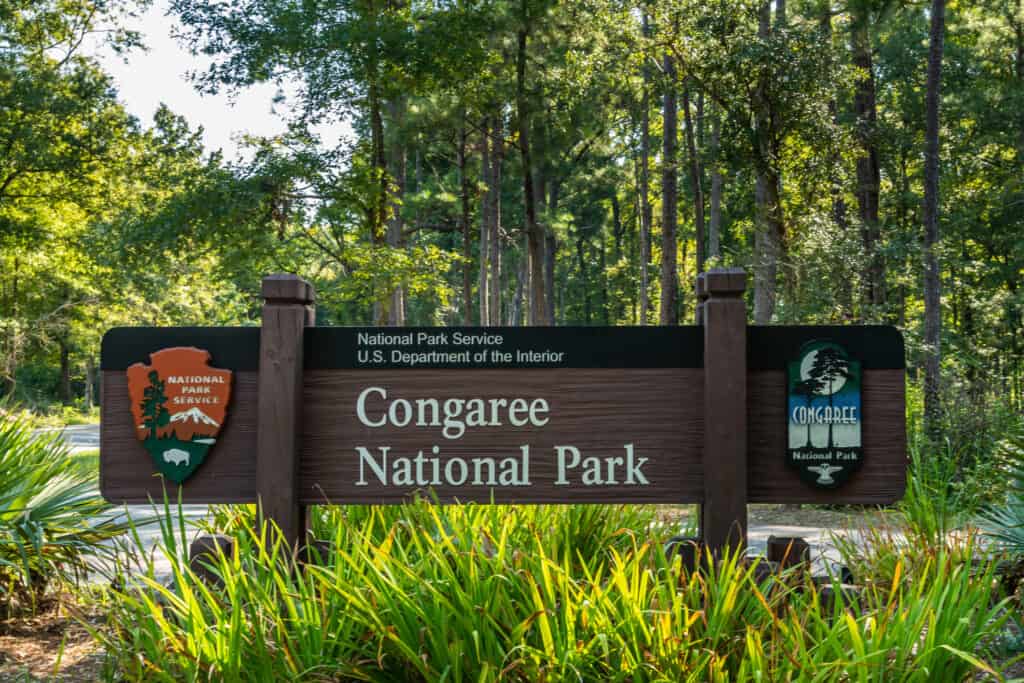South Carolina can be a hot and humid place. But just how hot does it get in the Palmetto State? Let’s take a look at the hottest places in South Carolina, as well as some records for the hottest temperature ever recorded in the state.
Where is the Hottest Place in South Carolina?
There are various locations in South Carolina that have regularly endured sweltering temperatures over the years. The state is notorious for its hot and muggy summers.
One of South Carolina’s hottest temperatures ever recorded was in Columbia, the state’s capital. The temperature in Columbia reached a scorching 109 degrees F on June 29th, 2012. Residents in the area were forced to seek relief from the oppressive heat as this record-breaking heatwave engulfed the area. Columbia is also known for having consistently hot temperatures.
Another inland city, Florence, has also experienced oppressive heat. Florence reached its maximum recorded temperature of 109 degrees F on July 10th, 1980. The city regularly experiences triple-digit summertime temperatures, giving it the distinction of being among South Carolina’s hottest locations.
Sumter, which is situated in the middle of the state, is accustomed to high temperatures. In Sumter, South Carolina, the mercury climbed to 107 degrees Fahrenheit on July 29th, 2011. In addition to presenting difficulties for locals, this heatwave severely taxed the area’s infrastructure and agriculture.
Coastal Cities That Feel the Heat
Even though interior towns frequently set temperature records, South Carolina’s coast also experiences extreme heat. The state’s main city, Charleston, has seen impressively high temperatures. Charleston had its hottest temperature of 104 degrees Fahrenheit on June 28, 1954. Although the ocean’s cooling effect benefits coastal locations, the summer heat may still be unbearable there.
It’s important to remember that high heat can cause health hazards and that you should take safety precautions like drinking enough water, finding shade, and minimizing your outside activity during the hottest parts of the day.
To sum it up, Charleston, Sumter, Columbia, and Florence are some of the warmest areas in South Carolina, each setting records for high temperatures. These cities have endured sweltering temperatures, reminding locals of the difficulties that summer heat may bring. However, if we had to select one, Columbia would likely be the warmest city in the state as it consistently experiences temperatures over 77 degrees F.

Palmetto
trees
(pictured) are notable plants in South Carolina that can handle the heat and are also the basis for the state’s nickname.
©KristenH9305/Shutterstock.com
The Hottest Temperature Ever Recorded in South Carolina
According to public state records, the hottest-ever temperature recorded in South Carolina occurred on September 8th, 1925 in Calhoun Falls in Abbeville County. The temperature was recorded as a whopping 111 degrees F. Secondary to this record was 109 degrees F recorded in Aiken County in the summer of 1983. While these records are impressive, these areas do not experience consistently high temperatures the way that Columbia does.
The History of Columbia
The South Carolina state capital, Columbia, has a lengthy history and has had its fair share of hot weather. As the intended capital of the newly created state of South Carolina, Columbia was established way back in 1786. The Congaree River and the city’s strategic location in the state’s center allowed for easy access to trade and transportation. The city was named after Christopher Columbus.
The Hot and Timultuous Climate of Columbia
Columbia has experienced the hot, muggy weather that is typical of the southeastern United States throughout its history. High heat and humidity throughout the summertime make Columbia a difficult place to live for the locals. The city’s interior location, far from the ocean’s cooling effect, contributes to the intense heat it experiences throughout the summer.
Many heatwaves and high-temperature records have occurred in Columbia over the years. The city’s maximum recorded temperature was 109 degrees F on June 29th, 2012, making it the warmest day in South Carolina history. The entire region was impacted by this terribly high temperature, and locals were looking for respite.
In addition to the extreme heat, Columbia has had other weather-related difficulties. The city is located in “Dixie Alley,” a tornado-prone region where violent thunderstorms and tornadoes are common, especially in the spring. In the past, Columbia has seen severe tornadoes like the one that struck on April 13th, 2020 that seriously damaged a number of buildings in the area.
Despite these climatic difficulties, Columbia has developed and thrived over time. With the founding of the University of South Carolina in 1801 and the transfer of the state capital from Charleston to Columbia in 1786, the city rose to prominence as a hub for government and education. Today, the city is home to a large number of colleges and universities, notably the University of South Carolina, which has been essential to the expansion and development of the city.
Columbia’s Historical Importance
The architecture and cultural legacy of Columbia also serve as reminders of its historical significance. The city is home to a number of illustrious structures and sites, including the South Carolina State House, which has served as the state’s administrative center since 1855. Historic structures from the late 19th and early 20th centuries can be seen in the Congaree Vista neighborhood.
Columbia has put in place a number of precautions to lessen the effects of the high heat. Numerous parks and green areas across the city offer inhabitants shady spots and recreational activities. In order to offset the urban heat island effect, more initiatives are being made to expand tree coverage and promote energy-efficient techniques.
The Population of Columbia
The population of Columbia, South Carolina, is varied and thriving. The people of Columbia add to the city’s rich cultural fabric. It makes sense why; the city is the state’s capital and a focal point for a number of industries, including healthcare, education, and government. Columbia’s population has been gradually increasing over the years because of the city’s favorable economic conditions and high standard of living. As of 2023, Columbia has a population of approximately 138,000.
The city of Columbia has a diversified population. People from many racial and ethnic origins are welcomed in the city, which contributes to its cosmopolitan culture. A sizeable majority of the population is made up of African Americans, and there are also expanding Hispanic, Asian, and other ethnic groups. The city’s diverse ethnic holidays, activities, and restaurants all reflect its variety.
The University of South Carolina
The booming educational institutions in Columbia have a significant impact on the local populace. The city’s young vitality and intellectual vigor are enhanced by the presence of a sizable student population at the University of South Carolina, established in 1801. The educational scene of the city is further enriched by the presence of additional colleges and institutions including Allen University and Columbia College.
The Columbian cultural scene is thriving and lively. The city holds a lot of festivals, concerts, and art exhibits all year round. The Koger Center for the Arts presents ballet, drama, and symphony concerts, while the Columbia Museum of Art exhibits a wide variety of visual arts. The South Carolina State Fair, which takes place every year, is a popular occasion that highlights the area’s agricultural heritage and provides entertainment for people of all ages.
With a vast variety of restaurants and cafés offering various cuisines, Columbia’s culinary scene reflects its varied population. Visitors can indulge in a range of eating experiences, from cosmopolitan delicacies to Southern comfort food.
Wildlife Near the Columbia Region
The city of Columbia is well-known for its rich fauna in addition to its metropolitan setting and cultural attractions. The city and its environs offer a variety of environments that sustain different animal and bird species.
Birds
The abundance of birds in Columbia’s fauna is a noteworthy aspect. The Atlantic Flyway, a significant bird migration path, passes through the city. The Congaree River, which flows through Columbia, is a popular destination for wading and water birds. Along the riverbanks, locals and visitors can see herons, egrets, wood ducks, and numerous songbirds. A paradise for birdwatchers, the Congaree National Park is next to the city and provides an opportunity to see species including the prothonotary warbler, barred owl, and red-headed woodpecker.

Congaree National Park (pictured) is a hub for bird species among other animals.
©iStock.com/kellyvandellen
Mammals
A wide variety of animals may be found in Columbia. White-tailed deer are common in the city’s forested regions and parks, including the well-known Riverbanks Zoo and Garden. Numerous exotic creatures live in the zoo proper, including giraffes, lions, and African elephants. Other animals that live in and near Columbia include river otters, raccoons, and gray foxes.
Reptiles and Amphibians
Reptiles and amphibians can find adequate habitats in the area surrounding Columbia. The woodland regions and marshes are home to snakes like the eastern diamondback rattlesnake and eastern copperhead. Wetland areas frequently host turtle sightings, including those of the Eastern box turtle and snapping turtle. Additionally, the city’s ponds, rivers, and marshes are home to a wide variety of frog and salamander species.
Fish
Fish of many species may be found in the lakes and rivers of Columbia, such as the Congaree River and Lake Murray. One common freshwater fish in Columbia’s lakes, ponds, and rivers is the bluegill. It is a species of sunfish distinguished by its vibrant blue and green coloring. Because it offers a thrilling fishing experience, bluegill is a favorite among fishermen, particularly beginners.
Although not indigenous to South Carolina, white perch may be found in several of the state’s waterways, such as Lake Murray. White perch are smaller than striped bass but provide significant prospects for sportfishing. They resemble striped bass in appearance.
Among other fish, anglers can try their luck at capturing crappie, largemouth bass, striped bass, and catfish. Diverse populations of turtles, water snakes, and other aquatic creatures are also supported by these aquatic habitats.
Other Animals
Due to the city’s close vicinity to Congaree National Park, both locals and tourists may explore this distinctive ecology. One of the biggest preserved areas of bottomland hardwood forest in the United States is the Congaree Swamp, which is a section of the park. Numerous plant and animal species may be found there, as well as the elusive and endangered red-cockaded woodpecker, otters, bobcats, and a wide variety of reptiles and amphibians.
It’s important to note that, like to any metropolitan location, Columbia’s animal habitats have been impacted by human activity. To preserve and inform the public about the local species, protected areas and conservation initiatives like the Congaree National Park and the Riverbanks Zoo are essential.
While Columbia can be hot, South Carolina in general is not known for being a particularly toasty state on par with desert states like Arizona. We definitely recommend giving the Palmetto State a visit on your next vacation!
The photo featured at the top of this post is © Bonita R. Cheshier/Shutterstock.com
Thank you for reading! Have some feedback for us? Contact the AZ Animals editorial team.






